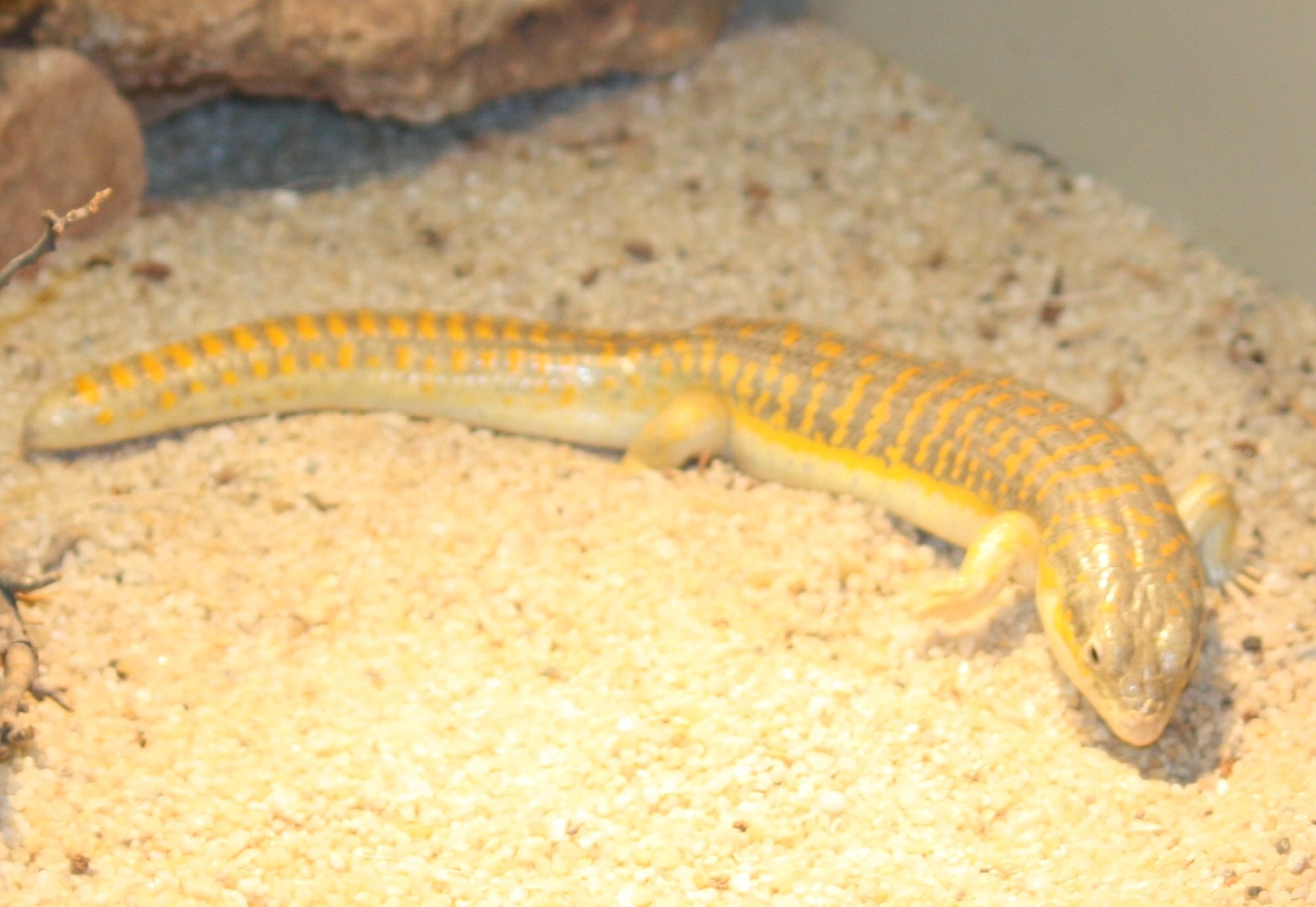Schneider's skink
A species of Ceylon tree skink Scientific name : Eumeces schneideri Genus : Ceylon tree skink
Schneider's skink, A species of Ceylon tree skink
Scientific name: Eumeces schneideri
Genus: Ceylon tree skink
Content
Description General Info
 Photo By Ltshears , used under CC-BY-SA-3.0 /Cropped and compressed from original
Photo By Ltshears , used under CC-BY-SA-3.0 /Cropped and compressed from original Description
Head moderate; snout short, obtuse. Nasal rather large, usually divided, in contact with the two anterior upper labials; no postnasal; 5 supraoculars, the three anterior in contact with the frontal; parietals entirely separated by the interparietal; 4 or 5 pairs of nuchals; ear-opening rather large, with 4 or 5 long pointed lobules anteriorly; 2 azygos postmentals. 22 to 28 scales round the middle of the body, perfectly smooth, the laterals smallest, those of the two median dorsal series very broad and larger than the ventrals. The length of the hind limb is contained 2.5 to 3 times in the length from snout to vent. When pressed against the body, the limbs just meet or fail to meet. A series of transversely enlarged subcaudals. Olive-grey or brownish above, uniform or with irregular golden-yellow spots or longitudinal streaks; a yellowish lateral streak, extending from below the eye to the hind limb, is constant; lower surfaces yellowish white. Size: from snout to vent, 16.5 cm (6.5 inches); plus tail, 20 cm (8 inches). 
General Info
Lifespan
8-20 years
Diet
Schneider's skink primarily sustains itself on insects, particularly beetles and caterpillars. Its diet also includes small invertebrates and occasionally plant matter, demonstrating opportunistic feeding behavior.
Appearance
Schneider's skink is a medium-sized skink with a slender body and long tail, featuring smooth, shiny scales. Its color varies from grayish-brown to yellowish with dark stripes running laterally along its body from the head to the base of the tail. Juveniles have brighter colors and more defined stripes which fade with age. Males, during the breeding season, develop an orange-red color on their heads and sides.
Behavior
Schneider's skink exhibits diurnal activity, frequently sunbathing to regulate body temperature. Exceptional burrowers, they construct elaborate sun-facing tunnels. Primarily carnivorous, their diet consists of small arthropods. Territorial and solitary, only interacting for mating. Remarkable defensive behaviors include tail autotomy and a unique bobbing movement to confuse predators.
Population
Stable
Scientific Classification
Phylum
Chordates Class
Reptiles Order
Lizards and snakes Family
Skinks Genus
Ceylon tree skink Species
Schneider's skink